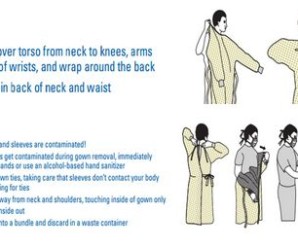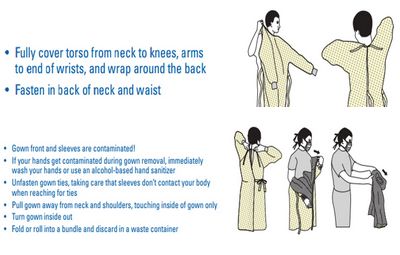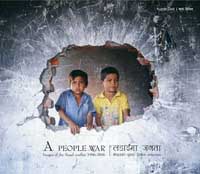Role of gown and gloves in ICU

Author: Sulabh Kumar Shrestha, KISTMCTH
Abstract: It is hypothesized that, use of gowns and gloves in ICU have following roles. Here, we present various studies from different part of the world that rejects or accepts the following hypotheses.
1. Decreases acquisition of multi-drug resistant organisms
- Methicillin Resistant Staphylococcus Aureus (MRSA)
- Vancomycin Resistant Enterococcus (VRE)
2. Decreases health care worker visits
3. Improves hand hygiene compliance

Study 1
Universal Glove and Gown Use and Acquisition of Antibiotic-Resistant Bacteria in the ICU A Randomized Trial Anthony D. Harris, MD, MPH; Lisa Pineles, MA; Beverly Belton, RN, MSN; J. Kristie Johnson, PhD; Michelle Shardell, PhD; Mark Loeb, MD, MSc; Robin Newhouse, RN, PhD; Louise Dembry, MD, MS, MBA; Barbara Braun, PhD; Eli N. Perencevich, MD, MS; Kendall K. Hall, MD, MS; Daniel J. Morgan, MD, MS; and the Benefits of Universal Glove and Gown (BUGG) Investigators
20 medical and surgical ICUs in 20 US hospitals from January 4, 2012, to October 4, 2012
From the 26 180 patients included, 92 241 swabs were collected
| MRSA+VRE acquisition | Individual MRSA acquisition | Individual VRE acquisition | Frequency of healthcare worker visits | Hand hygiene compliance |
| Difference, −1.71 acquisitions per 1000 person-days (↓↓) | difference, −2.98 acquisitions per 1000 person-days (↓↓↓) | difference, 0.89 acquisitions per 1000 person-days (↑) | 4.28 vs 5.24 entries per hour, difference, −0.96 (↓) | 78.3% vs 62.9%, difference, 15.4% (↑↑) |
Study 2
To Gown or Not to Gown: The Effect on Acquisition of Vancomycin-Resistant Enterococci
Laura A. Puzniak, Terry Leet, Jennie Mayfield, Marin Kollef, and Linda M. Mundy
From 1 July 1997 through 30 June 1998 and from 1 July 1999 through 31 December 1999, health care personnel and visitors were required to don gloves and gowns upon entry into rooms where there were patients infected with nosocomial pathogens.
From 1 July 1998 through 30 June 1999, only gloves were required under these same circumstances.
During the gown period:
59 patients acquired VRE (9.1 cases per 1000 MICU-days)
During non-gown period:
73 patients acquired VRE during the no-gown period (19.6 cases per 1000 MICU-days)
Study 3
The role of gown and glove isolation and strict handwashing in the reduction of nosocomial infection in children with solid organ transplantation.
Slota M, Green M, Farley A, Janosky J, Carcillo J.
All children admitted to the PICU immediately after solid organ transplantation, excluding renal transplantation, and at subsequent readmissions to the PICU were eligible for the study. Children with current infection or known exposure to varicella were excluded from the study initially or at readmission.
Nosocomial infection rate in gown-glove group:
2.3 per 100 patient days
Nosocomial infection rate in Pre-study group:
4.9 per 100 patient days
Study 4
A prospective study to determine whether cover gowns in addition to gloves decrease nosocomial transmission of vancomycin-resistant enterococci in an intensive care unit.
Srinivasan A1, Song X, Ross T, Merz W, Brower R, Perl TM
All patients who were at risk to acquire VRE, were admitted to the intensive care unit from August 1998 to January 1999, and had at least two perirectal cultures were included in the analysis of VRE acquisition.
VRE acquisition rate in gown and gloves period:
1.80 cases per 100 days at risk
VRE acquisition rate in gloves only period:
3.78 cases per 100 days at risk
Study 5
Does hand hygiene compliance among health care workers change when patients are in contact precaution rooms in ICUs?
Kirven Gilbert, Cortney Stafford, MPH, Kali Crosby, RN, Edna Fleming, RN, Robert Gaynes, MD
MICU nurses – 66.7% vs 51.6%
Study 6
Reduction of Nosocomial Infection during Pediatric Intensive Care by Protective Isolation
Bruce S. Klein, M.D., William H. Perloff, M.D., and Dennis G. Maki, M.D.
Sample: 70 children who were not immunosuppressed and who required mechanical ventilator support and three or more days of intensive care to receive standard care or protective isolation with the use of disposable, nonwoven, polypropylene gowns and nonsterile latex gloves.
Risk factors predisposing patients to infection were comparable in the two groups.
- Nosocomial colonization occurred later among isolated patients (median, 12 vs. 7 days).
- Among patients who were isolated, the interval before the first infection was significantly longer (median, 20 vs. 8 days)
- The daily infection rate was 2.2 times lower
- There were fewer days with fever (13 percent vs. 21 percent).
Study 7
Prevention of nosocomial respiratory syncytial virus infections through compliance with glove and gown isolation precautions.
Leclair JM, Freeman J, Sullivan BF, Crowley CM, Goldmann DA.
A longitudinal intervention trial during three RSV seasons, from 1982 to 1985, with an intervention to increase compliance introduced midway through the second season
37 patients acquired nosocomial RSV infections during 7547 days at risk.
The adjusted relative risk, comparing the infection rate in the period before the intervention (when compliance with isolation precautions was noted in only 38.5 percent of the observed patient contacts) with the infection rate in the post-intervention period (when compliance more than doubled) was 2.9
Rates of nosocomial RSV infection increased linearly with increasing levels of exposure to patients shedding virus, but the rise in the infection rate with increasing exposure was less than one fourth as great in the period after the intervention as it was before.





